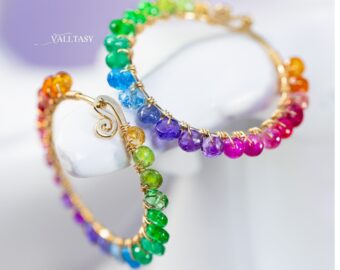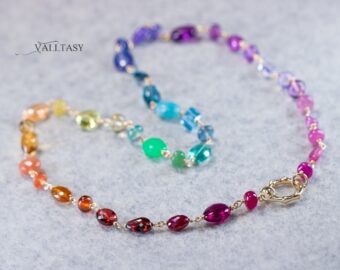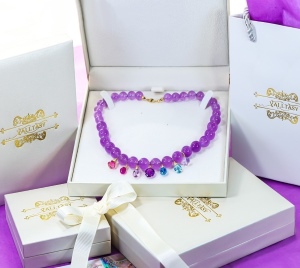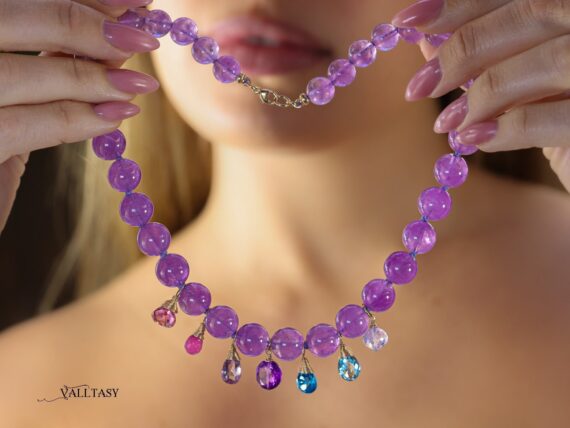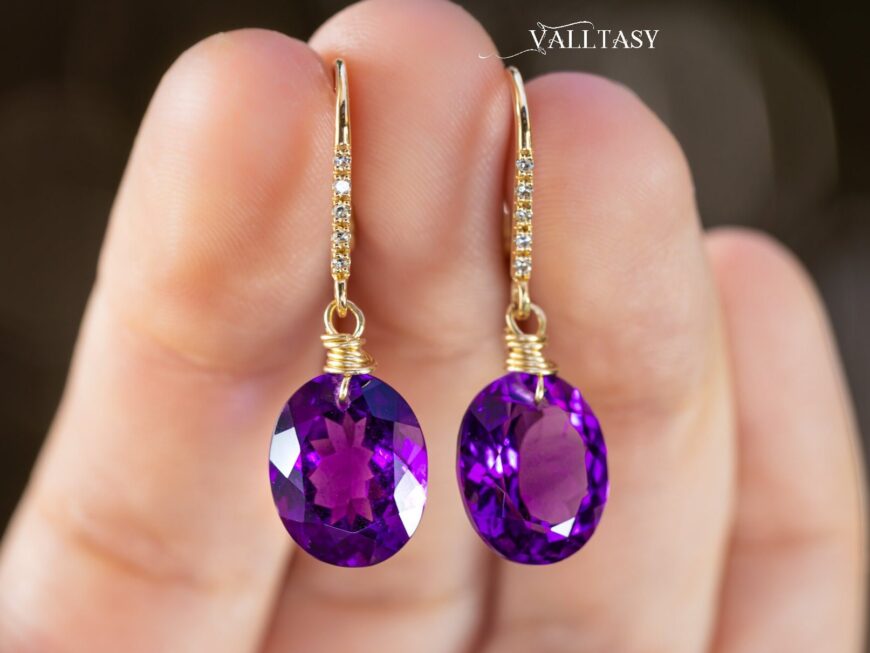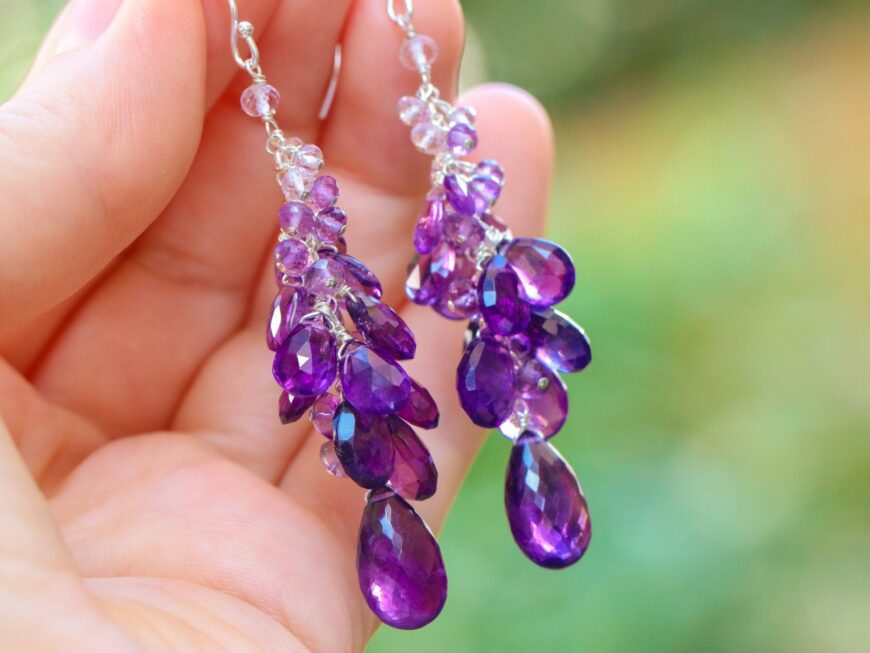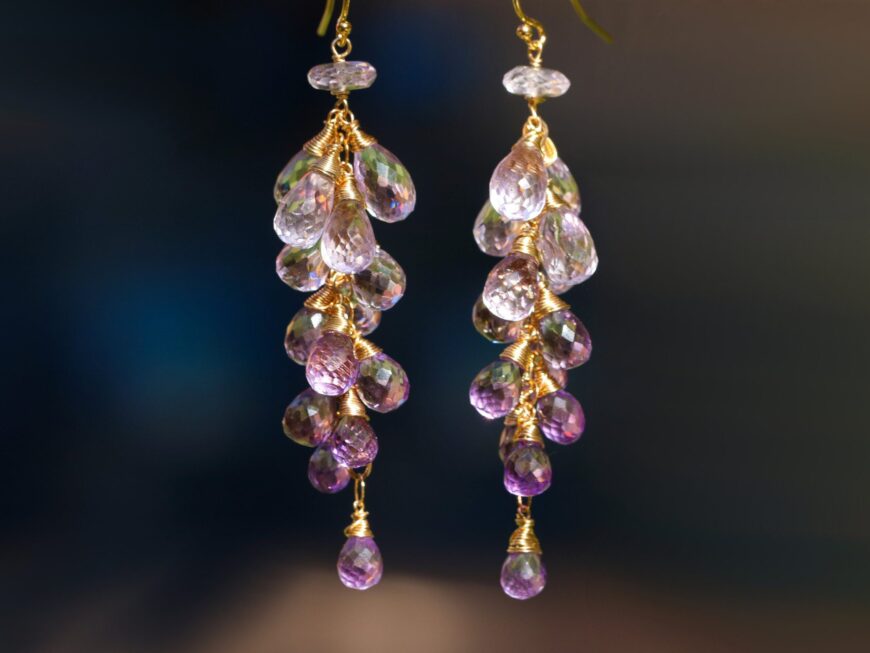No items in the cart
Blog
Amethyst Color: Purple and Beyond
Amethyst, one of the most revered gemstones in the world, is celebrated for its captivating color. This violet-hued gem has enchanted wearers for centuries, from ancient royalty to modern jewelry enthusiasts. But what exactly gives Amethyst its distinctive color, and how does it vary across different stones?
The Spectrum of Amethyst Color
Amethyst is most commonly associated with a deep purple hue, but its color can range from pale lilac to a rich, intense violet. The gemstone’s color is due to the presence of iron and trace elements within the quartz crystal structure. When these elements interact with radiation, it causes the stone to exhibit its signature purple shade.
Shades of Amethyst
Amethyst exhibits a wide range of shades, from light lilac or lavender, which exudes a soft and romantic feel, to medium Amethyst, a balanced purple that is versatile for all types of jewelry. Deep Amethyst, often referred to as royal purple, is a rich, intense violet with red undertones, considered the most valuable and desirable shade for its bold, luxurious look.
Beyond Purple: Other Colors of Amethyst
While purple is the defining color of Amethyst, there are rare variations that offer a different palette:
- Pink Amethyst
This pastel pink variation of Amethyst is rare and primarily found in Patagonia, Argentina. Pink Amethyst exudes a soft and calming beauty, making it a unique and sought-after gemstone for delicate jewelry pieces.
- Amethyst Citrine (Ametrine):
Ametrine is a captivating bicolor gemstone that features both Amethyst and citrine in one stone. This combination results in a beautiful blend of purple and yellow or orange hues, creating a striking visual effect. Ametrine is mainly sourced from Bolivia and is prized for its natural color zoning. - Red Amethyst (Fire Amethyst):
Red Amethyst, also known as fire Amethyst, is characterized by red hematite inclusions within the crystal. These inclusions give the stone a reddish tint, especially near the surface, resulting in a stunning mix of purple and red tones.
Factors Affecting Amethyst Color
Several factors contribute to the color of an Amethyst, including:
- Location of Origin: Amethyst from different regions can exhibit unique shades. For example, Siberian Amethyst is known for its deep purple color, while Brazilian Amethysts often has a lighter hue.
- Cut and Clarity: The way an Amethyst is cut can impact how light interacts with the stone, affecting its apparent color. Stones with high clarity and fewer inclusions will display color more evenly.
Choosing the Right Amethyst Color for You
When selecting Amethyst jewelry, consider the shade that best suits your personal style and skin tone. Lighter shades like lilac or lavender can complement fair skin tones, adding a soft touch of color without overwhelming. Richer shades, such as deep royal purple, make a bold statement and are versatile enough to pair with various outfits, from casual to formal wear.
Additionally, consider the setting of the jewelry. Yellow gold tends to enhance the warmth of deeper Amethyst, while white gold or silver can provide a striking contrast, making the purple color pop.


